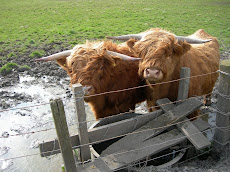The Frontier Between the Countries Gave Birth to the Border Reivers
The Border Line between England and Scotland took centuries to agree. Scottish and English knights met in the mid thirteenth century in an attempt to resolve its course
Monarchs Determine the Border Line
The Frontier between England and Scotland was first determined in the eleventh century through the aggressive policies of English and Scottish kings. They were bent on the aggrandizement which followed from territorial gain and advertising a line of demarcation which signaled possession. The people who lived astride the Line became mere pawns, brushed aside and little thought of in the lust for control over the opposite nation.
People of the Border Lands Ignore the Border Line
Where once they could cross the rivers of Esk and Tweed at will and pasture cattle or grow crops in the ground that had been so familiar to their forefathers, there now was confrontation and rivalry. A Border Line now existed at these rivers! They, of a sudden, were not welcome in the lands which now belonged to another country. Confrontation between the people of the two nations became an every day occurrence, part and parcel of their way of life.
Confrontation Becomes a Way of Life across the Border Line
The strife was widespread as clans on each side of the Border fought each other for the right to cultivate a crop or pasture a beast. They ignored the Line set by the monarchs of both realms, were indifferent to any deterrent set in place to bring them to order. Crime became endemic. Theft, maiming, even murder became the norm. Amicable relations between the two countries would suffer as an outcome.
The Border Line is a Cause of Contention
The concerns of the English king, Henry lll, that the Line of the Border was being ignored by people of both nations, was clear in his desire to establish for all time its margins and thus establish order in the north of his domain and some amity with his Scottish neighbors. A meeting of the senior knights of Northumberland and those of southern Scotland in 1222 achieved nothing but discord. Nothing was to change. The Border remained a Line of contention.
Further Attempt to Establish the Border Line
In 1248 Henry 111 again raised the issue and succeeded in achieving yet another meeting between knights of England and their counterparts of Scotland at the Border Line to establish its boundaries. The two parties "perambulated" or walked part of the Border Line in an attempt to reach agreement on its delineation. They could not see eye to eye and the meeting broke down when violence erupted. An inherent dislike of each other fueled the deadlock.
Agreement Is Finally Reached on the Margins of the Border Line
In 1249 a larger party of knights from the two countries met again, again at the insistence of Henry 111. As in the previous year they "perambulated" a part of the Border Line and a decision was finally reached albeit the Scots left the scene dissatisfied with the outcome. Having now achieved this breakthrough it became a matter of advertising the result of the deliberations to the people who lived on both sides of the Border. Thus the Border Laws were born.
The Border Laws Established
The Border Laws, Leges Marchiarum, formulated following the meeting of the Scottish and English knights in 1249, would be amended and revised many times during the next 350 years. Down the years they would be little deterrent to the hard, obdurate peoples who lived on each side of the Border Line. The Border Reivers would rule in the Border lands. The Law would be futile in its attempts to control them.
In 1985 I moved to the Scottish Borders and fell in love with the place. It was a surprise to find out that I knew nothing of the Border Reivers, the lawless clans who held sway in the Border country for centuries. I found their history to be absorbing and fascinating and today, twenty-five years later, the enthusiasm and passion shows no sign of waning. I have written a book about the most infamous Scottish Border Reiver of the 16th century, Kinmont Willie Armstrong. The Book is called 'Deadlock and Deliverance',
Tom Moss.
Article Source: http://EzineArticles.com/?expert=Tom_W_Moss
Subscribe to:
Post Comments (Atom)











No comments:
Post a Comment